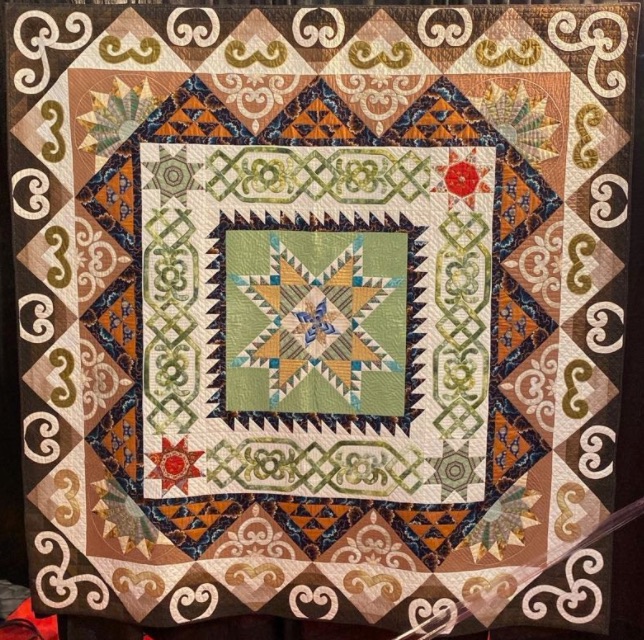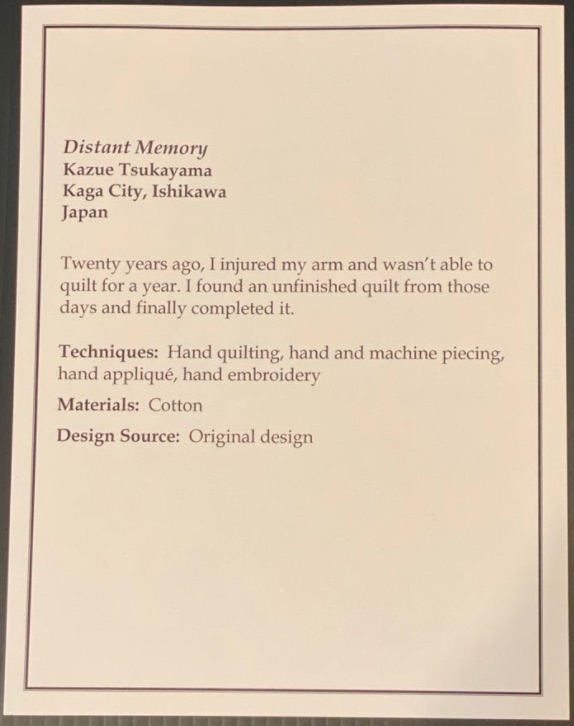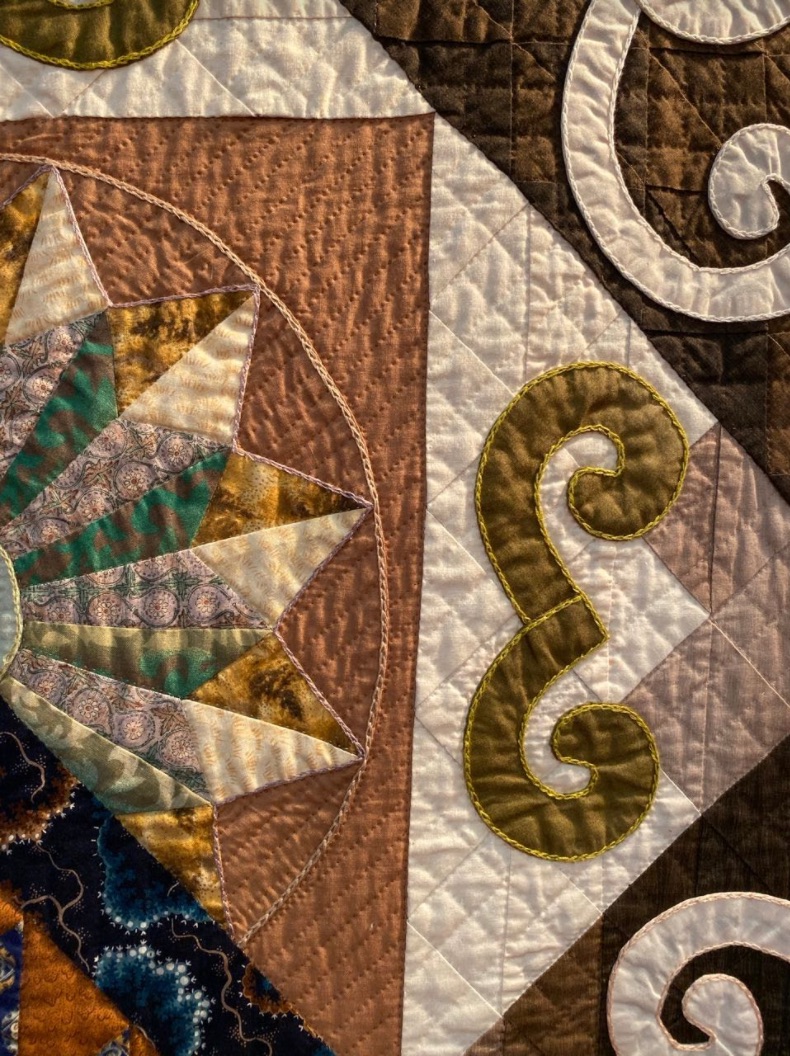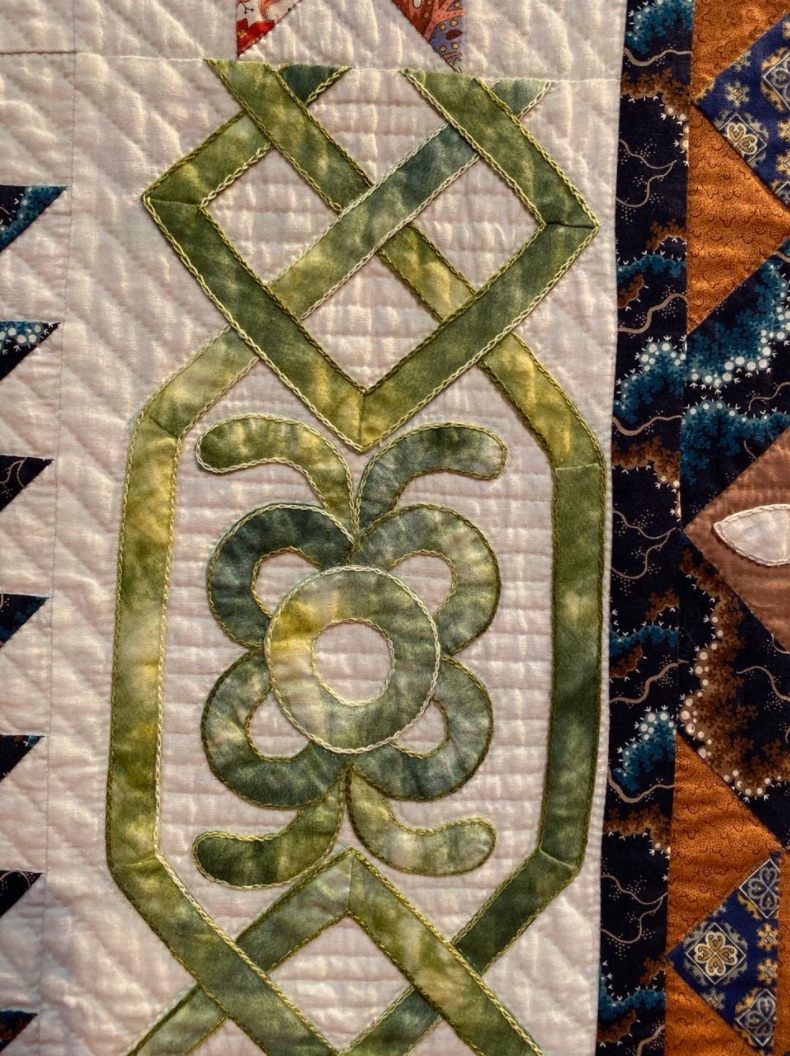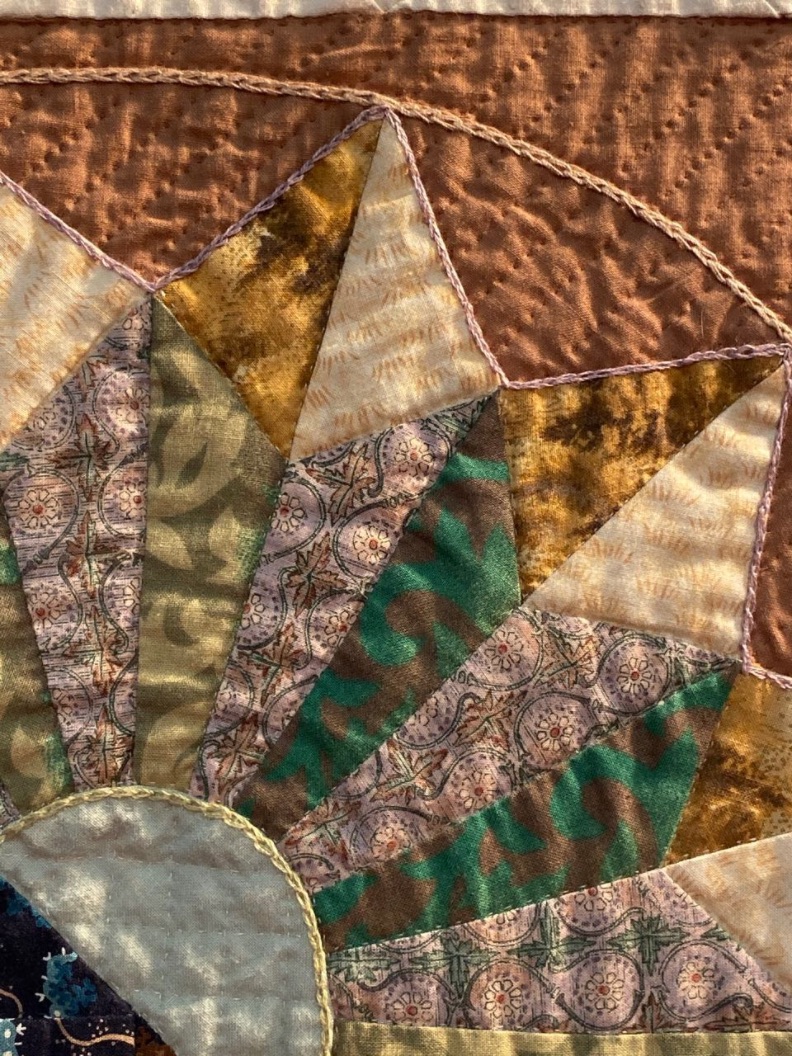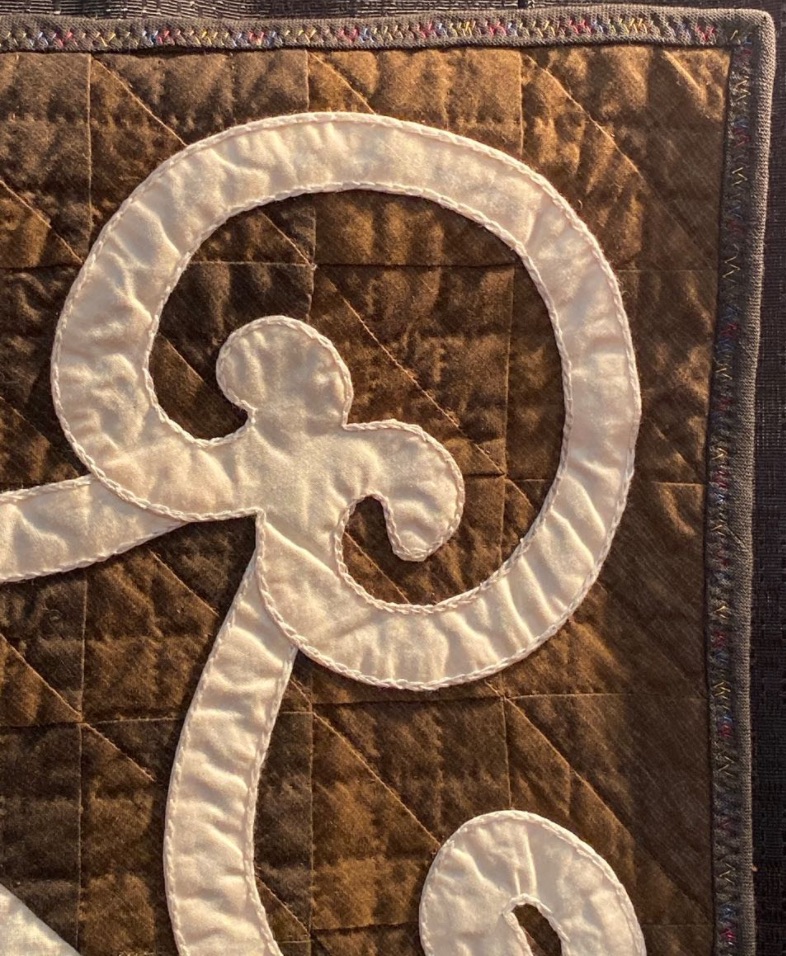Is this a Road to California block? Play Jinny's game and find out.
Is this a Road to California block? Play Jinny's game and find out.
The elegant appliquéd border on this quilt looks like a lattice fence surrounding Taeko Kozuka's Elegant Rose Garden.
It is so intricate, it almost looks like lace.
The "garden" itself is made up of hand pieced hexagons and Dresden plate designs and is highlighted by beautiful hand quilted roses. The stunning work will take your breath away.
Elegant Rose Garden by Taeko Kozuka of Akiruno City, Tokyo, Japan was featured in the Balanced Piecing and Appliqué category at Houston 2019.

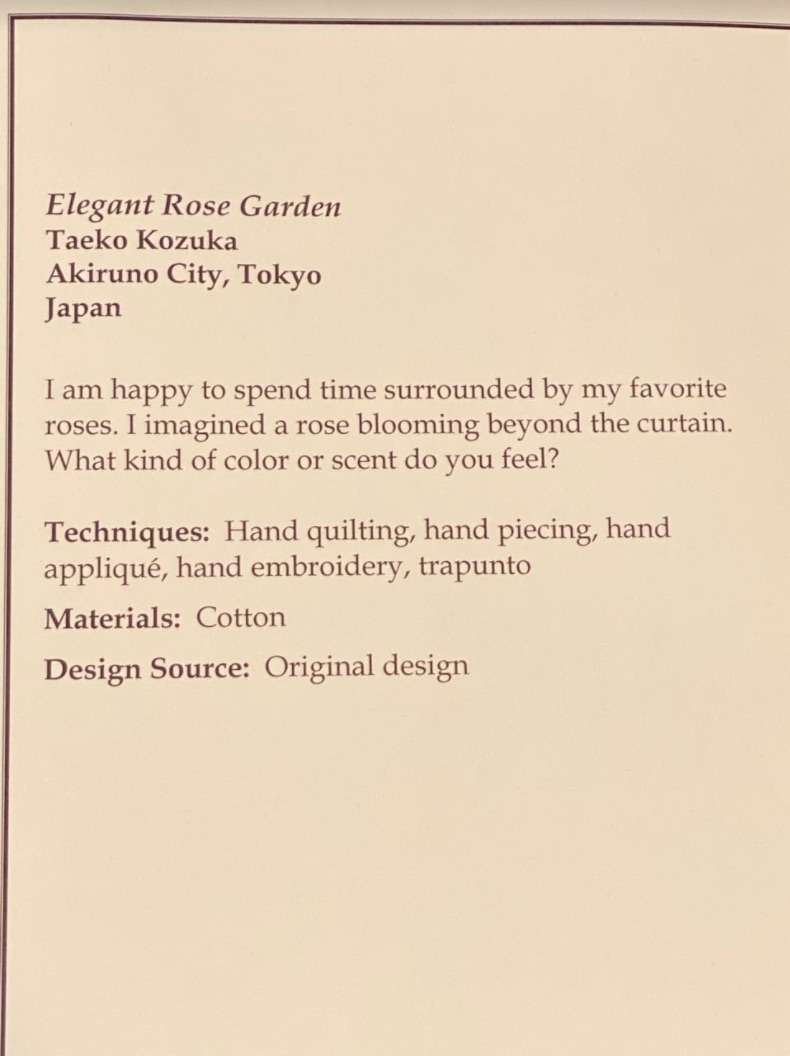
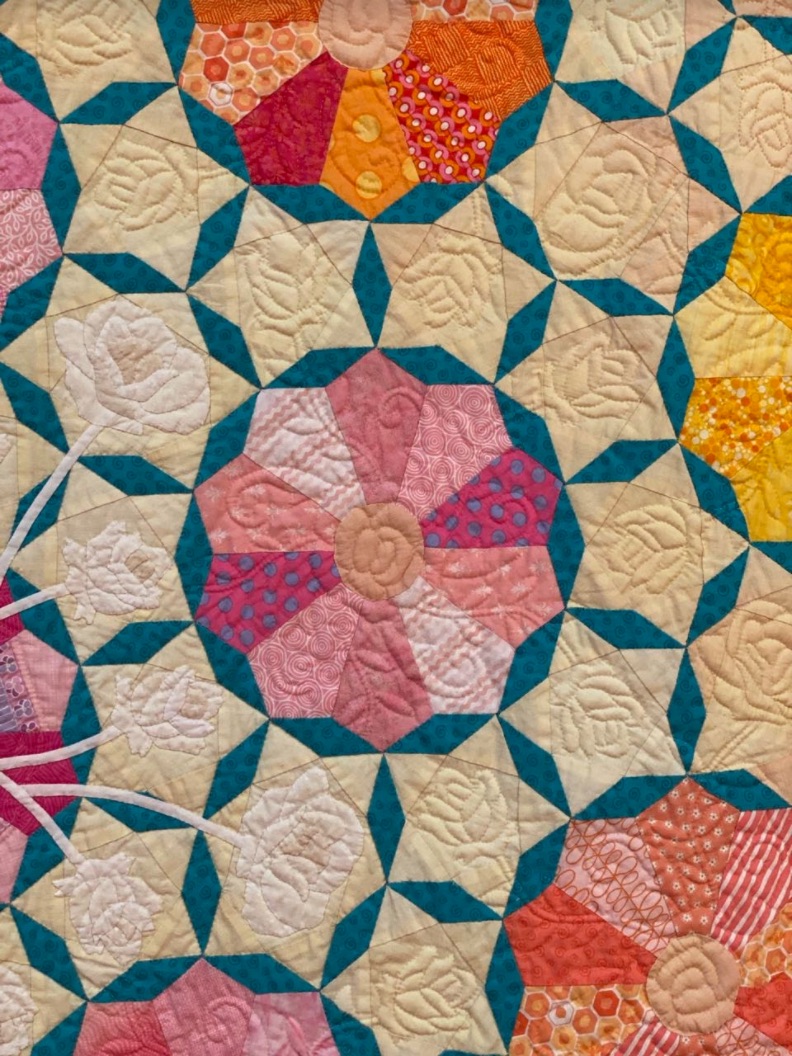
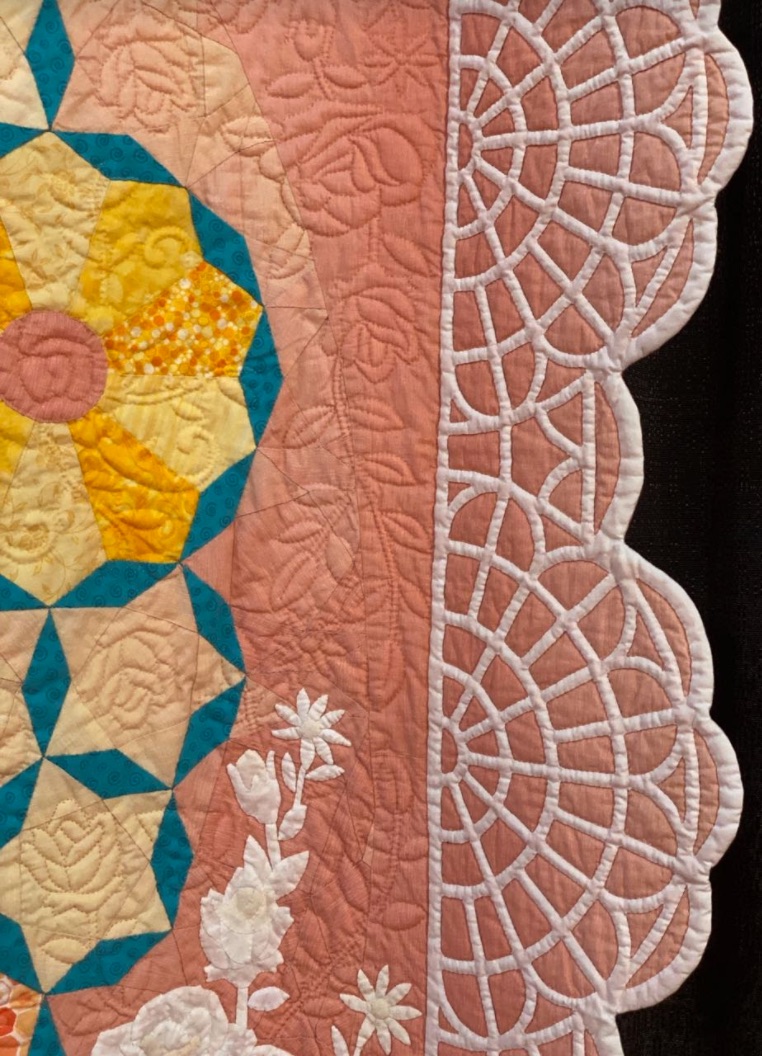
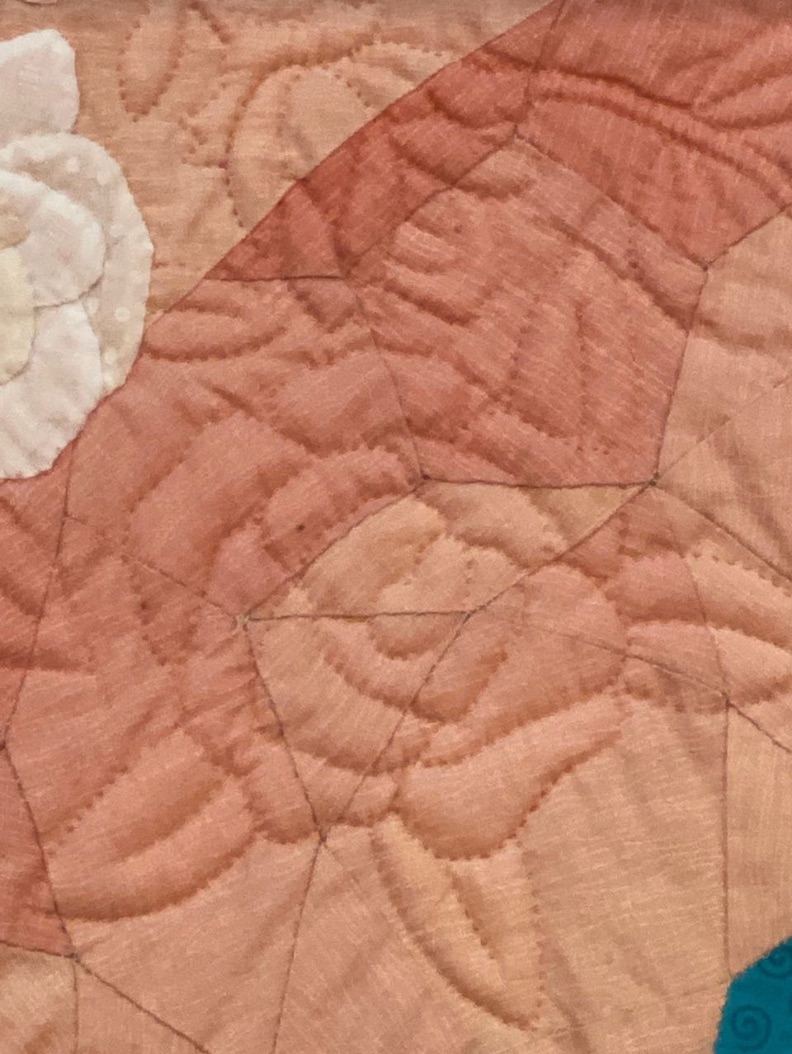
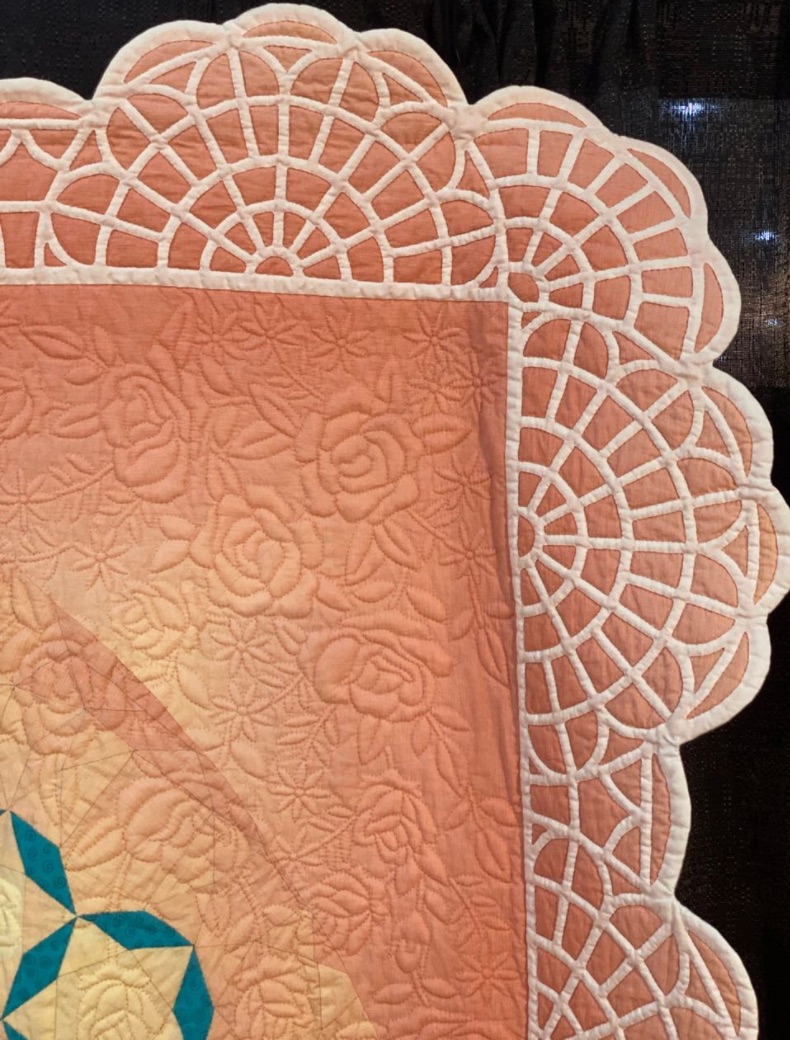
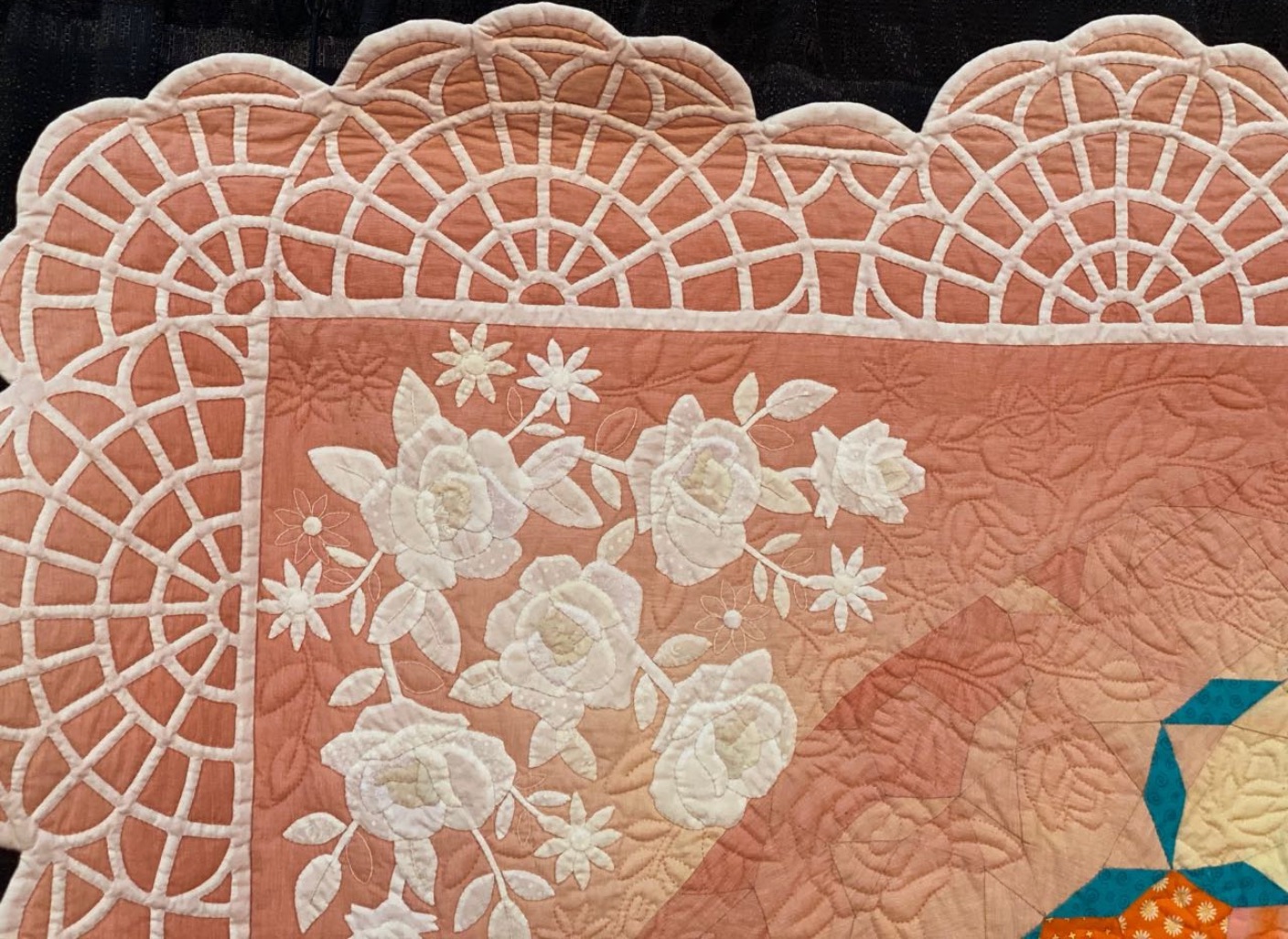
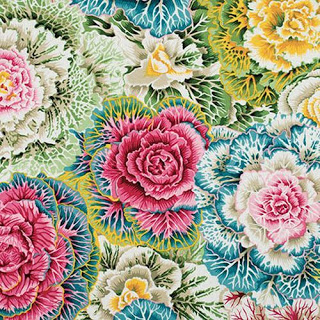 Barbara Black will be working on Alex's Mystery Quilt as well and has set up a Forum topic where you can ask questions, post photos, and enjoy the process more with like-minded friends. This is especially helpful for those who don't do Facebook: Forum--Kaffe Mystery Quilt--Learn with Alex.
Barbara Black will be working on Alex's Mystery Quilt as well and has set up a Forum topic where you can ask questions, post photos, and enjoy the process more with like-minded friends. This is especially helpful for those who don't do Facebook: Forum--Kaffe Mystery Quilt--Learn with Alex.
Click here to read more about Barbara and the mystery quilt at Barbara's website.
Fire Dragon Rhapsody by Ricky Tims won the award for Best Machine Quilting at the 2006 AQS Show and Contest in Paducah, KY.
The dragons in the quilt are based on the iron grillwork from the old post office in downtown Pueblo, CO. The quilt measures 60" x 60" and uses 100% Cotton Hand-dyed/Hand Painted fabrics. Ricky machine quilted it on a domestic machine (BERNINA).
To see the quilt up close, check it out here as a Zoom Quilt.
You can learn appliqué from Ricky in our Applique Masterclass Part 2 and Show 804: Create Your Own Rhapsody Quilt - Part 2.
Fire Dragon Rhapsody - 36 Pieces Non-Rotating
Fire Dragon Rhapsody - 100 Pieces Non-Rotating
Fire Dragon Rhapsody - 289 Pieces Non-Rotating
Fire Dragon Rhapsody - 100 Pieces Rotating
Fire Dragon Rhapsody - 289 Pieces Rotating
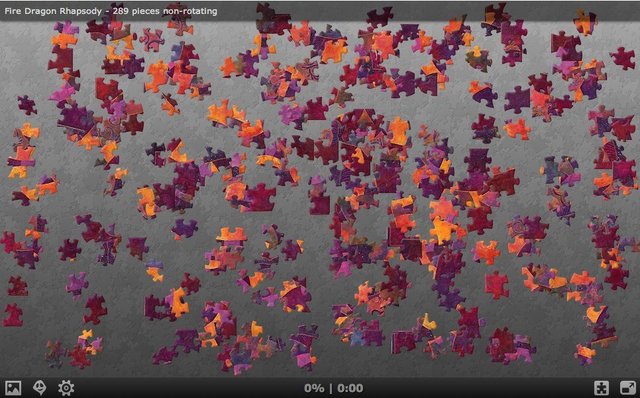

In this lesson, we continue our focus on Asymmetrical Balance, where the visual arrangement of elements (color, texture, space, etc.) is balanced, but with a more energetic and exciting feeling.
Let's look at the example Bath Balloon Fiesta by Miyuki Humphries. Both the balloons at the top of the quilt, and the Royal Crescent building in the lower portion, use almost the same amount of space. There is a real sense of movement as the building's curve sweeps across from one side to the other. The motion of movement is repeated by the curved balloon floating up and away. This arrangement of two sides that are different (balloons and a building), create a sense of balance and real interest for the viewer.
Asymmetrical balance can be achieved using a number of different methods
- Place objects directly opposite each other in a composition
- Place lighter colors higher than darker colors in a composition
- Emphasize motion to move the eye along across your composition
- Introduce a pop of color
Bath Balloon Fiesta by Miyuki Humphries. (Image by TheQuiltShow.com)
Let's look at some excellent examples featuring these principles:
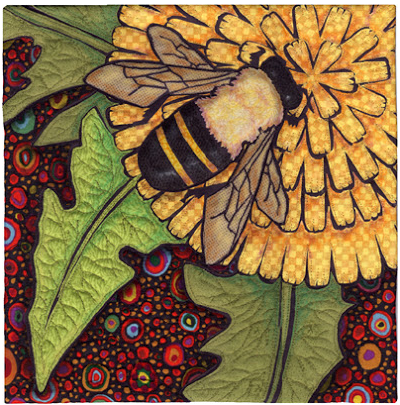
Weeds Are Flowers Too by Terry Grant (Image courtesy of Terry Grant)
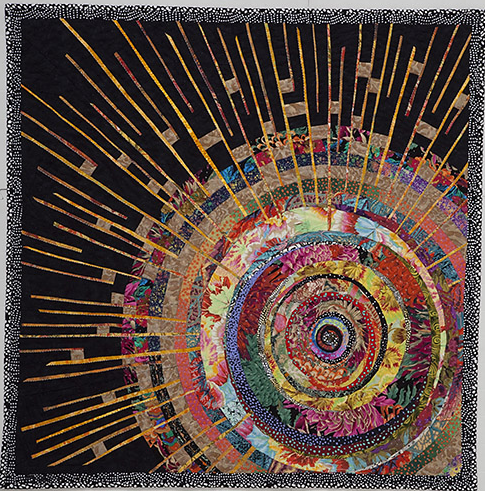
Kaleidoscopic XXXVII: The Artful Non Sequitur by Paula Nadelstern (Show 307, Show 508, Show 2010). [Image byTheQuiltShow.com]
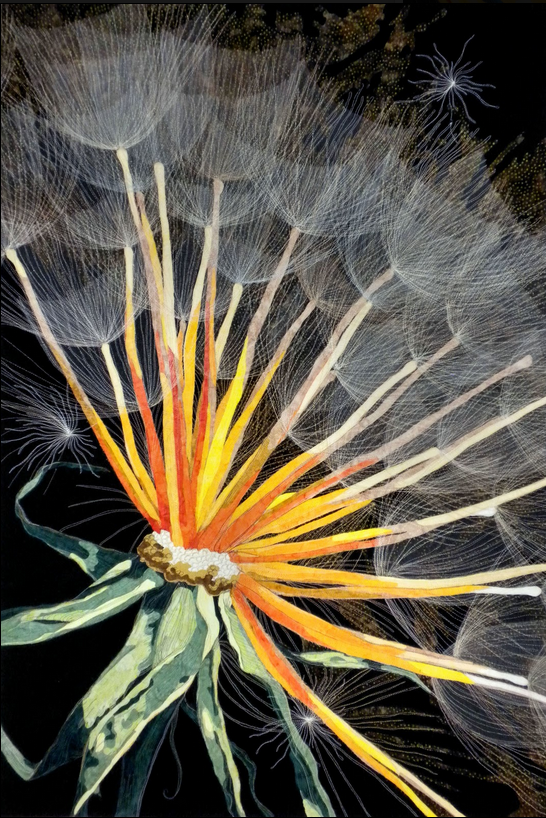
Dandelion by Kate Themel. (Image courtesy of Kate Themel)
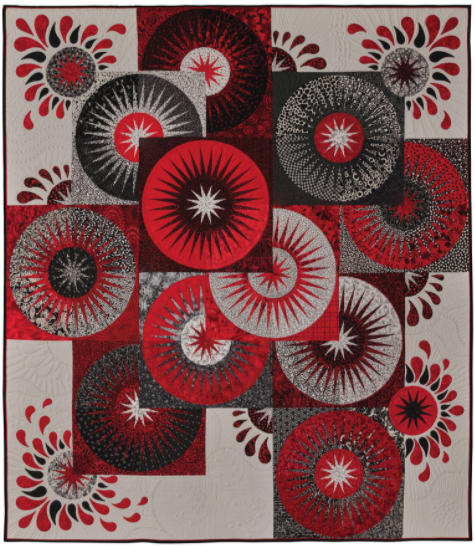
Splat! by Dawn Siden. (Image AQS)
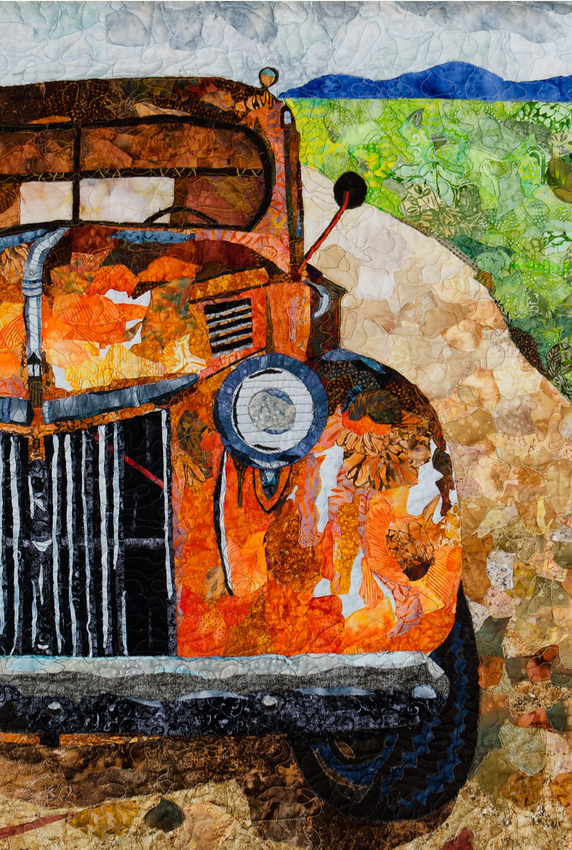
Pauline's Ford by Rod Daniel. (Image courtesy of Rod Daniel)
Fiber artist Linda Beach (Show 1409) is known for translating naturescapes into stunning quilted works of art. From sketch to finished work, Linda's works evoke feelings that transport you along her magical journey.
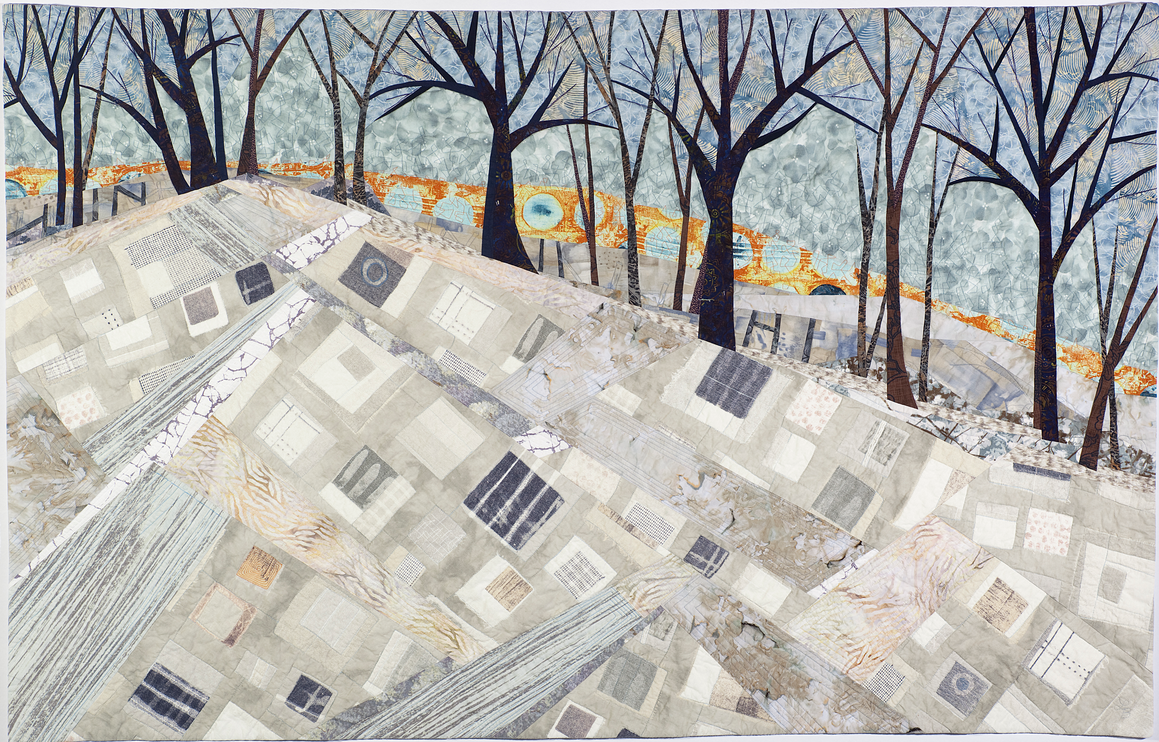
by Linda Beach (Show 1409)
(All images courtesy of Linda Beach, unless otherwise noted)
Asymmetrical balance can be defined as when elements on either side of a composition do not reflect one another, as opposed to symmetrical balance where elements on each side of a composition mirror each other or closely match. When you are using asymmetrical balance in a composition, you want to make sure that the visual weight of the work balances even though the actual elements do not mirror each other. While a composition with asymmetrical balance may not be as easy to design as a symmetrical one, it can often be much more visually interesting. Many times something more complex and dynamic is created as a result of the visual tension when asymmetrical balance is used.
So how do you achieve asymmetrical balance? Understanding visual weight is important. Which leads to the next question of what is visual weight? My favorite definition of visual weight is the ability of an area or element of art within a composition to draw attention to itself. Some of the ways to direct a viewers’ attention to an area include the use of color, value contrast, line or shape.

In my piece Marking Time I used asymmetrical balance in the composition because I wanted to convey the feel of the immense open space of the rolling hills or prairie as the setting for an old, abandoned farmhouse. The landscape needed to have a large presence to give that sense of endless space even though my focal point was going to be the farmhouse in the grove of trees. With that in mind, I needed to find a way to make the landscape compelling and interesting but not so that it overwhelmed the farmhouse.
Working within the parameters of my concept of a farmhouse and trees in a landscape, I decided that the house and trees would be of a dark value with the surrounding area in light to medium values. This eliminated the use of value to achieve asymmetrical balance as well as shape or color as I did not want any other objects on my imaginary landscape to distract from the farmhouse and trees. My decision was to use line to achieve the asymmetrical balance. When looking at Marking Time, all the lines or contours of the landscape run between the house and trees in the lower right to the opposite end of the piece in the upper left corner. Your eye, after taking in the focal point of the house and trees, is drawn into the rest of the landscape by following the lines upwards into the hills. The number of running lines and differing shades of yellows and golds create a compositional shape in of itself so that a counterweight is provided and asymmetrical balance is achieved between this area and the farmhouse and trees.
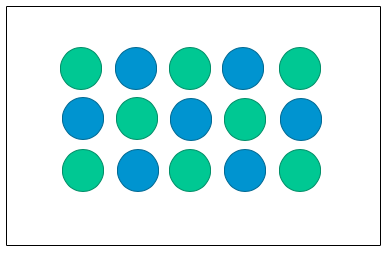
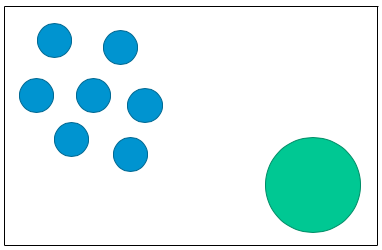
Symmetrical Design Asymmetrical Design
Practice Exercise:
Using a shape of your choice (i.e. circle, square, triangle, hexie), create a symmetrical AND an asymmetrical design based on what you have learned in this and the previous lesson (Lesson 32).
Click here for more topics related to The Art of Quilt Design program.
TQS continues its feature of quilts from the exhibit Log Cabin Today! Presented by Brigitte Morgenroth, a series of log cabin quilts created by Brigitte Morgenroth that were featured at the Houston International Quilt Festival in 2015. The exhibit is described as:
"Twenty-five years ago, Brigitte Morgenroth discovered quilting when she lived in Bophuthatswana (a former homeland in South Africa) and Libya. She creates modern and interesting Log Cabin quilts, with her choice of expressive colors and material, combined in different variations and arrangements: Log Cabin with a twist, triangular, undulating, or pineapple. Silk and polyester satin are her favorite materials, sometimes combined with patterned cotton. Mainly, she sews large quilts and sometimes smaller, more sophisticated ones. All of her quilts are hand-quilted. She gives this old pattern a modern, interesting character."
Please enjoy Brigitte's third quilt from the exhibition.
Title of Quilt: In Grenzen: Grün
Quilter's Name: Brigitte Morgenroth
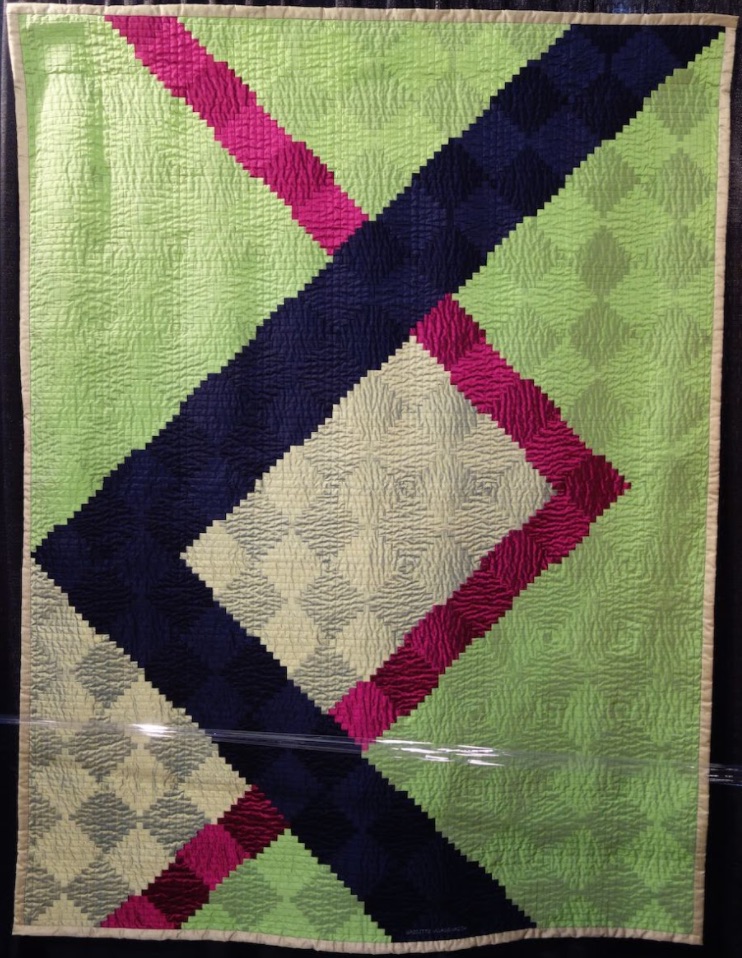

Photos by John Anderson
As with many quilters, Vicki Thompson is inspired by color and the beauty of plant life. Vicki challenged herself to combine machine and hand quilting along with fusing, machine piecing, and painting with Inktense pencils to create this colorful homage to the beauty of nature.
Leaves and Thorns by Vicki Thompson of Mandeville, Louisiana was featured in the Balanced Piecing and Appliqué category at Houston 2019.
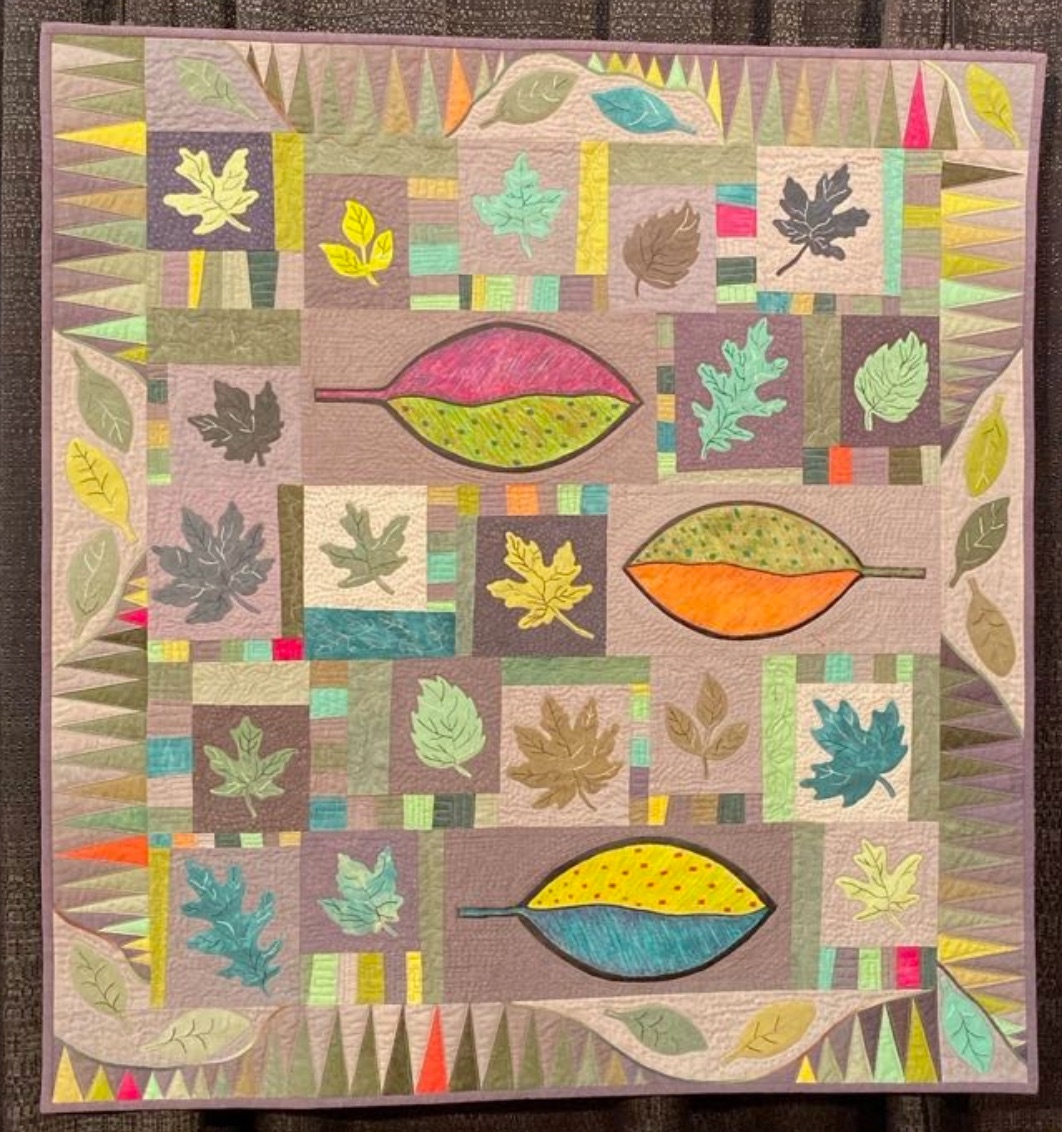
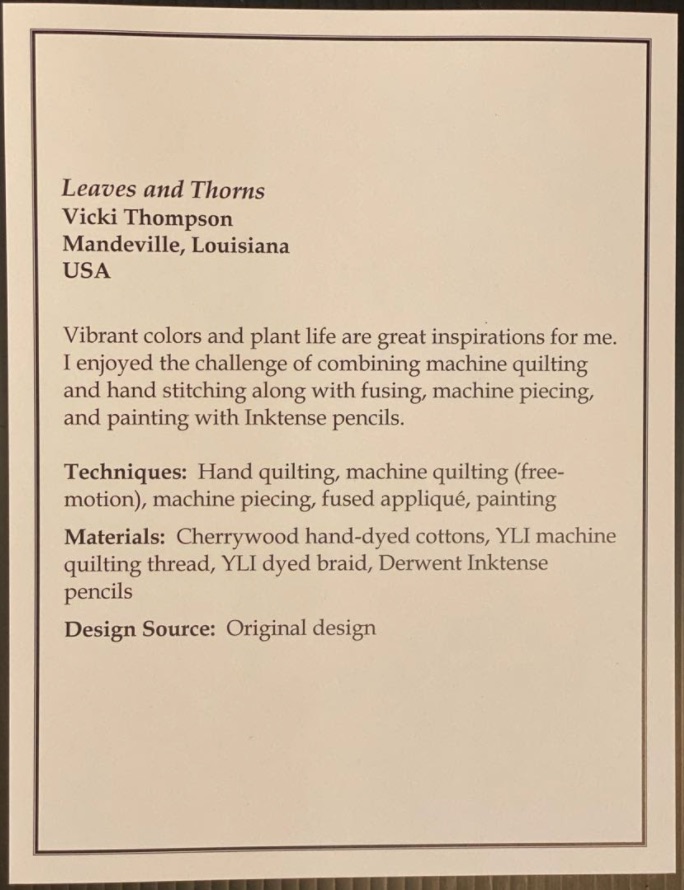
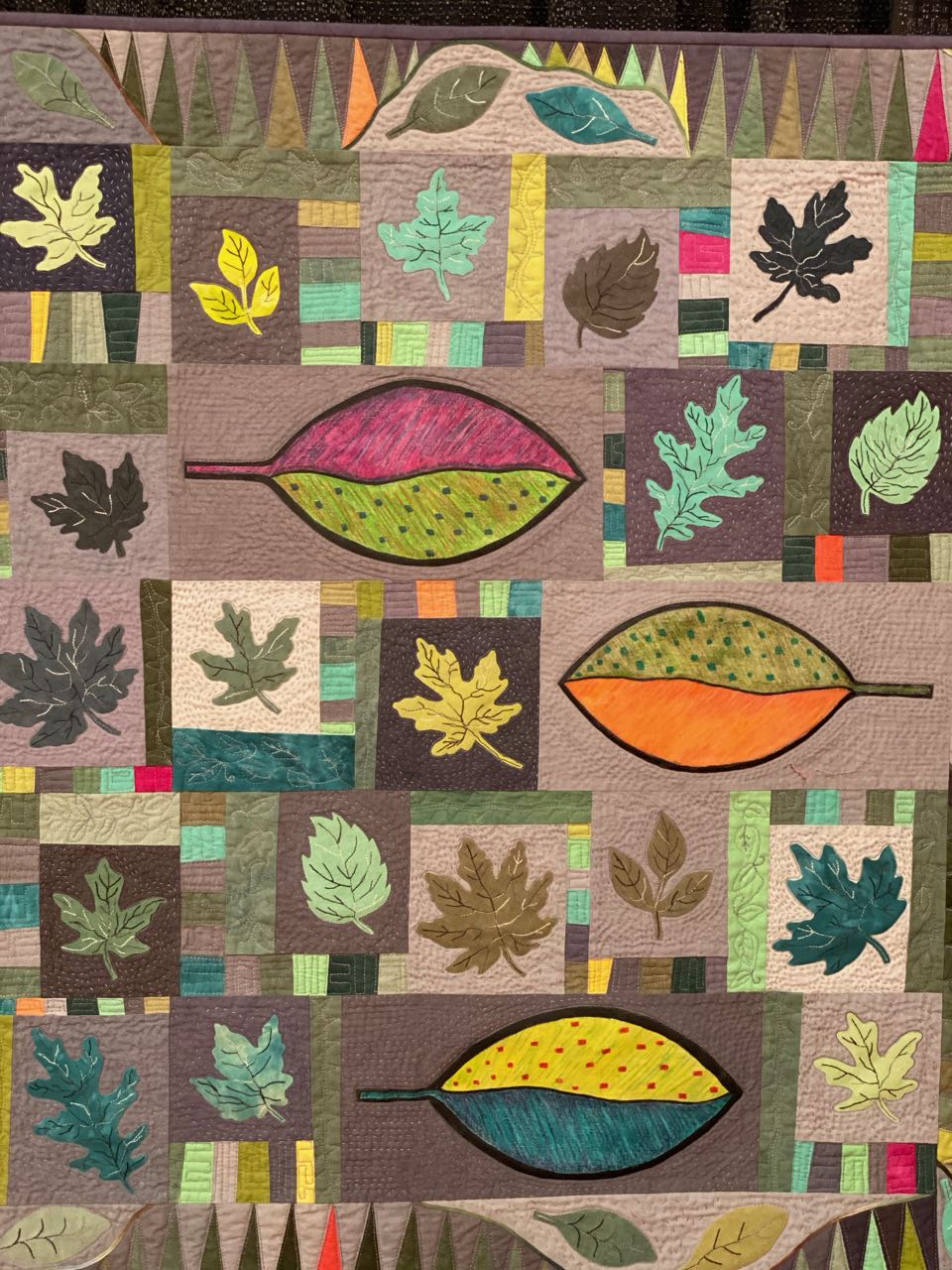
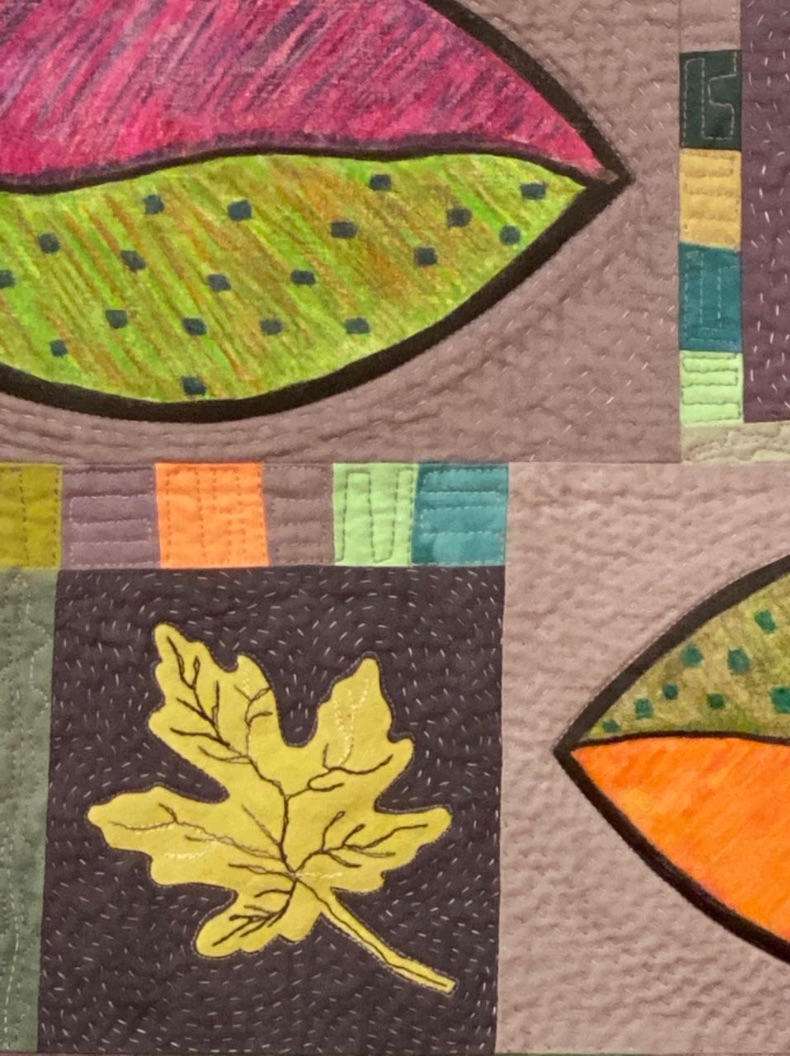
Hugs and Kisses by Sue Garman was the TQS BOM 2010.
You can see the quilt, and a collection of the rest of Sue Garman's BOMs for TQS, here.
You can learn appliqué from Sue in our Applique Masterclass Part 2 and Show 304: Appliqué and Longarm.
HugsAndKissesbySueGarman - 35 Pieces Non-Rotating
HugsAndKissesbySueGarman - 99 Pieces Non-Rotating
HugsAndKissesbySueGarman - 300 Pieces Non-Rotating
HugsAndKissesbySueGarman - 35 Pieces Rotating
HugsAndKissesbySueGarman - 99 Pieces Rotating
HugsAndKissesbySueGarman - 300 Pieces Rotating
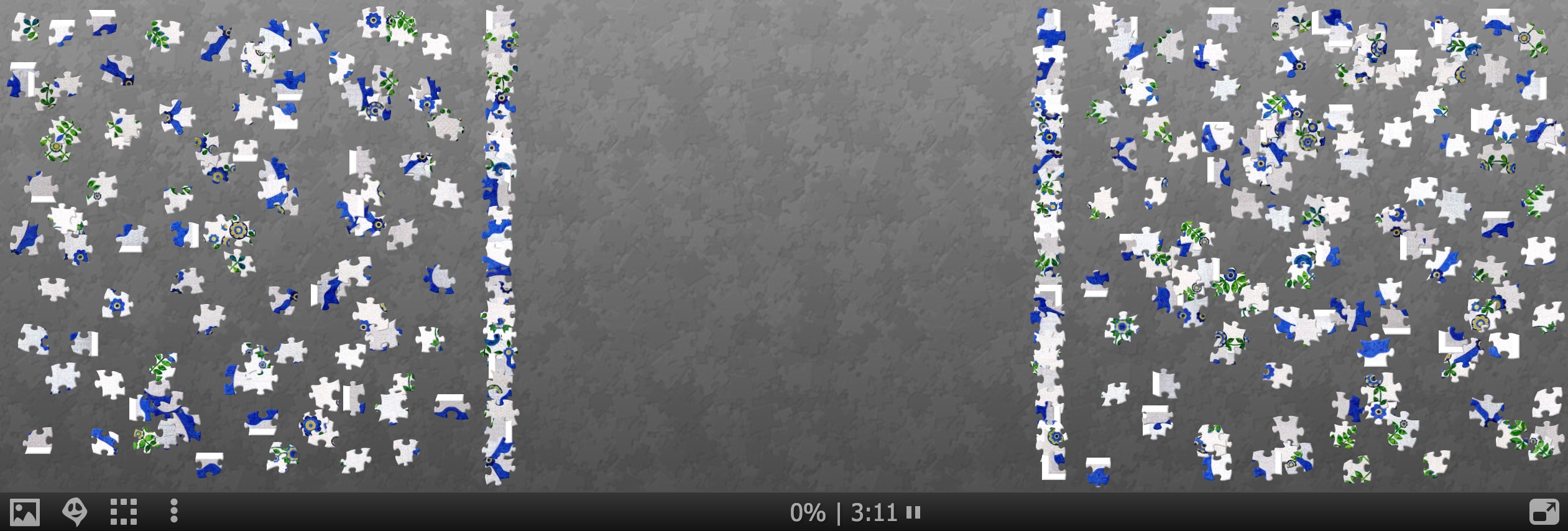
We continue our selection of quilts exhibited in 2019 at the Houston International Quilt Festival as part of their 45th Anniversary, the Sapphire Anniversary. The Sapphire Celebration exhibit is described as:
"Quilters have long used the color blue to symbolize trust, loyalty, wisdom, confidence, intelligence, faith, truth, and heaven. Sapphire is also the chosen gem to celebrate 45th anniversaries—which International Quilt Festival is doing this year (2019)! These new and antique blue and white quilts will be suspended from the ceiling in a spectacular and unforgettable display."
To be a part of the exhibit, quilts had to fit the following criteria:
Please enjoy the twenty-second quilt from the exhibition by Karin L. Crawford and quilted by Pat Gorelangton.
Title of Quilt: Poakalani Heliconia
Quilter's Name: Karin L. Crawford
Quilted by Pat Gorelangton
![]()
![]()
Kazue Tsukayama injured her arm 20 years ago and wasn't able to quilt for a year. She found this quilt from that time and finished it. She must have healed quite nicely as this is a hand pieced, hand appliquéd, and hand embroidered masterpiece.
Distant Memory by Kazue Tsukayama of Kaga City, Ishikawa, Japan was featured in the Balanced Piecing and Appliqué category at Houston 2019.
